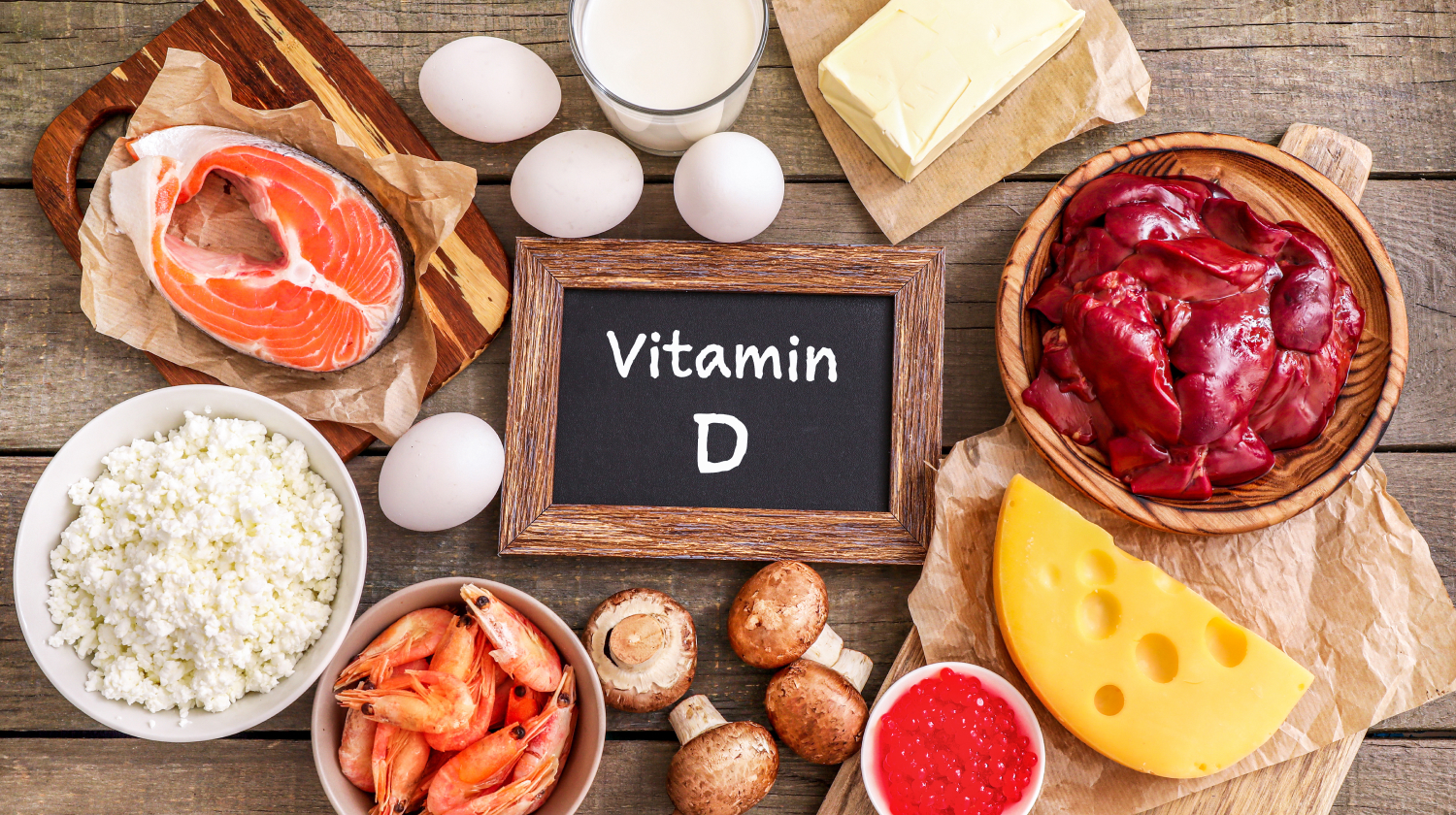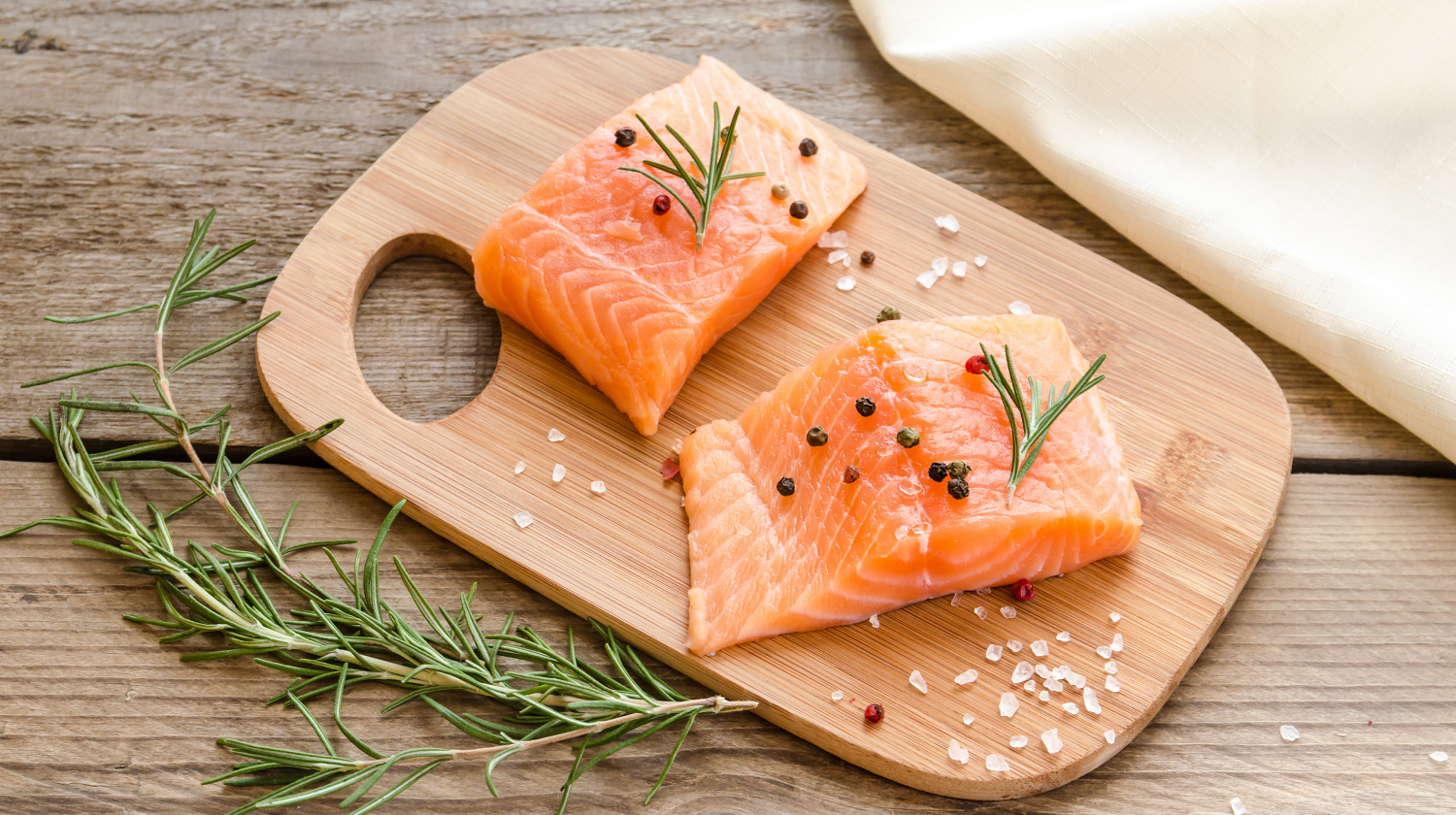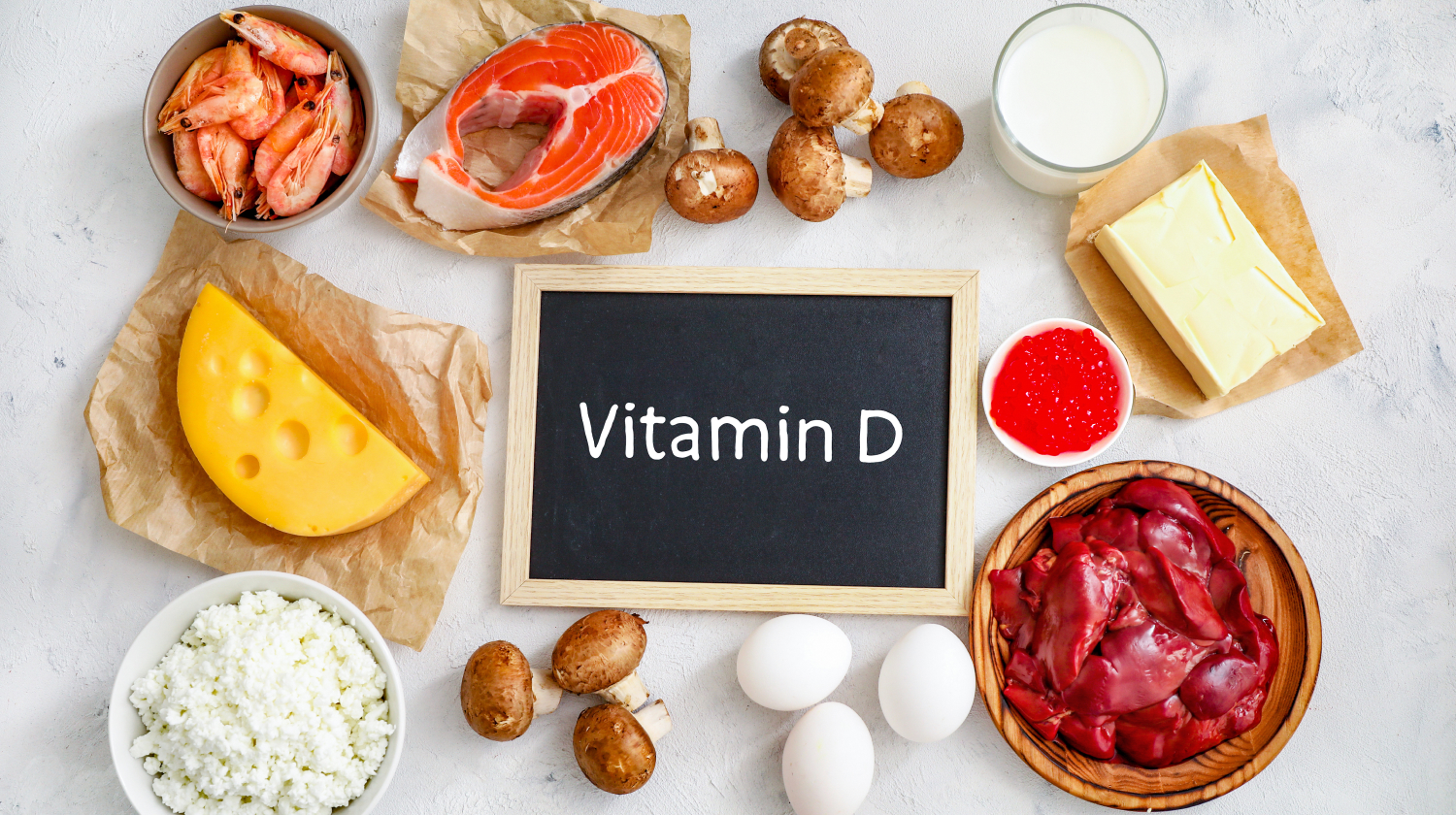Foods High In Vitamin D: 6 Nutritious Foods Rich In Vitamin D 2024

Vitamin D is a unique nutrient. It plays a dual role as a vitamin and a hormone. In either case, getting enough vitamin D is essential for preventing illness and maintaining health.
While it’s well known that vitamin D improves bone health, experts continue to link this vitamin with new and exciting health benefits — from boosting immunity to preventing cancer.
Despite its importance, many people are still not getting enough vitamin D to reap its full health benefits.
To ensure that you’re meeting your vitamin D needs, let’s explore some of the top food sources of this vital nutrient.
List Of Foods High In Vitamin D
Only a few foods contain substantial amounts of vitamin D. These six foods will give you a healthy dose to improve your intake.
- Cod Liver Oil.
- Fatty Fish.
- Egg Yolks.
- Mushrooms.
- Beef Liver.
- Fortified Products.
What Is Vitamin D?
Vitamin D[1] is one of the 24 micronutrients your body needs to function properly.
While we get it from food, vitamin D is different from other vitamins because our bodies can also make it when we expose our skin to UVB rays from the sun. For this reason, it’s often dubbed the sunshine vitamin.
The two primary forms of vitamin D in food and supplements are D2 and D3. The D2 form is usually found in plant foods, whereas foods high in vitamin D3 are animal-based. Some research suggests that our bodies absorb vitamin D3 better, but both types will raise your blood levels of this critical nutrient.
Whichever way you get vitamin D — from food or sun exposure — it enters your body inactive and must go through an activation process in your liver and kidneys before your body can use it.
When not immediately needed, inactive vitamin D is stored in your body’s fat tissue. Your body can do this because vitamin D is a fat-soluble vitamin, meaning it dissolves in fat and oil. As a result, you can stock up on vitamin D to get you through periods — like winter — when you can’t access this nutrient from food or the environment.
Even still, many people are vitamin D deficient. Recent analysis has estimated[2] that 24% to 40% of adults worldwide have insufficient vitamin D levels.
People spending more time indoors and using sunscreen are factors experts say contribute to this common deficiency. To combat this, they are encouraging us to improve our intake of vitamin D-rich foods.
So, let’s take a closer look at the best food sources of vitamin D to help you boost your intake.
What Foods Are High In Vitamin D?
Cod Liver Oil

Cod liver oil is an excellent source of vitamin D. While eating cod liver is undoubtedly an option — it’s more common to purchase this oil in liquid or capsule form.
One teaspoon of cod liver oil[3] provides up to 75 percent of adults’ recommended daily vitamin D intake. And that’s not all — this oil is also rich in anti-inflammatory omega-3 fats and Vitamin A.
Many people eat cod liver oil by the spoonful right out of the bottle, but you may find it more palatable mixed with juice, smoothies, or salad dressings. It’s best not to use this oil for high-heat cooking, as heat will break down the beneficial fats and vitamins.
Keep in mind more is not better. Too much cod liver oil can cause unpleasant side effects and dangerous vitamins D and A levels. One teaspoon daily is plenty to close the gap in your vitamin D intake.
Fatty Fish

Oily, cold water fish are another top source of vitamin D. In fact, a three-ounce serving of wild salmon can get you close to your daily needs by providing anywhere from 380 to 670 International Units of this nutrient.
The type of salmon you choose will determine the exact amount of vitamin D. For example, sockeye salmon[4] clocks in at the higher range while coho salmon[5] is lower in vitamin D. Still, both are a great way to boost your intake.
Other great vitamin D-rich fish include halibut, tuna, mackerel, rainbow trout, and sardines.
For pregnant women, the Food and Drug Administration recommends focusing on low mercury choices and limiting the amount of fatty fish[6] eaten to eight to twelve ounces per week.
Egg Yolks

Not a fish fan? Egg yolks can help you meet your needs for vitamin D. Each whole egg provides[7] about 41 IU, meaning a three-egg omelet can get you about 20 percent of your daily needs.
Serving a side of whole grain toast with your eggs may further improve your vitamin D status. Whole grains are rich in magnesium[8] which is needed to activate vitamin D in your body. Therefore, getting enough magnesium maximizes the health impact of vitamin D.
Mushrooms

Mushrooms[9] are a go-to source of vitamin D for plant-based eaters.
Aside from fortified foods, mushrooms are the only substantial non-animal source of this nutrient due to their unique capacity to produce vitamin D2 when exposed to UV light.
That said, most commercial mushrooms in grocery stores are grown in the dark. Without UV light exposure, they will contain negligible amounts of vitamin D.
But, some manufacturers have begun using UV lights in their mushroom-growing facilities to address this. Now that vitamin D is on the nutrition facts panel, you can check the label on mushrooms to determine which options are your best bet.
Beef Liver

Pan-frying a three-ounce portion of beef liver[10] offers up to 40 IU of vitamin D, which is around four times more than the vitamin D present in other cuts of beef.
Beef liver is also one of the few foods high in vitamin D and zinc, which together can support a healthy immune system.
Because of beef liver’s high cholesterol content, it’s best to swap in the beef liver for another red meat rather than just adding it to your current intake.
If you’re reluctant to try liver, consider chopping it up and serving it with pasta instead of ground meat.
Fortified Foods

When scientists discovered in the early 20th century that vitamin D deficiency was causing rickets — a childhood bone disease — food manufacturers worldwide voluntarily fortified certain foods with vitamin D to improve public intake.
And it worked. Rickets disease is now rare in developed countries. Today fortified milk and cereal are the most common sources of vitamin D in people’s diets; however, all of the foods listed below are frequently fortified with extra vitamin D.
- Milk.
- Plant-Based Milk.
- Yogurt.
- Cheese.
- Orange Juice.
- Bran Cereals.
Keep in mind that fortification is optional for most of these foods. Check the label to ensure your selection contains the extra dose of vitamin D that you want.
Why Do You Need Vitamin D?
Why does eating vitamin D-rich foods matter for your health?
First and foremost, vitamin D is necessary[11] for building strong and healthy bones. It helps your body absorb and maintain calcium and phosphorous — essential minerals for hardening the bone matrix.
Vitamin D deficiency is linked to a higher risk[12] of osteoporosis, fractures, and softening of the bone.
Beyond bone health, however, many different cells in our bodies have vitamin D receptors. When these receptors attach to the active form of vitamin D, a switch is flipped, which affects gene expression within that cell. In this way, vitamin D acts as a steroid hormone, influencing various bodily functions and potentially impacting our health on a larger scale than we currently know.
For example, researchers are investigating how vitamin D may boost immunity, prevent cancer, build muscle strength, and protect heart health. This is an ongoing area of study, but let’s look at some of the benefits that have been suggested so far.
Vitamin D And Immunity
According to a recent review,[13] vitamin D may help your body fight off infections by enhancing the germ-fighting ability of specific immune cells. Furthermore, vitamin D is thought to play a role in strengthening your body’s physical barriers against infection, including your skin and intestinal walls.
Vitamin D And Cancer
Vitamin D has also been linked to reducing cancer risk and progression.
Many observational studies[14] have shown that people with high vitamin D levels are less likely to develop multiple cancers.
While this doesn’t prove that vitamin D prevents cancer, a 2020 study[15] published in the Journal of the American Medical Association found that supplementation with vitamin D3 may reduce the risk of developing invasive and fatal cancers.
In this study, thousands of adults over age 50 with no pre-existing cancer diagnosis were either given a vitamin D3 supplement providing 2000 IU per day or a placebo treatment. After about five years, the group who received the vitamin D3 supplement had a significantly lower rate of invasive and fatal cancers.
Vitamin D And Heart Health
There is a lot of interest in vitamin D and heart health.[16] Scientists determined that vitamin D helps manage blood pressure. Additionally, studies have shown that low vitamin D levels are linked with higher risks of multiple heart diseases.
Clinical research results, however, are mixed. One large clinical trial saw no improvement in heart disease risk when adults took vitamin D supplements over a period of years.
Further, too much vitamin D may negatively affect heart health. For this reason, health organizations[17] caution against high-dose vitamin D supplementation for heart health.
Other Vitamin D Health Benefits
Studies have identified many more vitamin D functions within our bodies that could prevent diabetes, improve mental and cognitive health, promote weight loss, and increase muscle mass.
Clinical study results,[11] however, remain mixed on these topics, but ongoing research will improve our understanding of this powerful nutrient.
How Much Vitamin D Do You Need?
The Recommended Dietary Allowance for vitamin D[11] is 600 IU per day for men and women between the ages of 19 and 70.
Adults over 70 should aim for at least 800 IU daily.
Your specific needs may vary based on personal health factors and your current levels of vitamin D. A discussion with your doctor can help you determine the right goals for you.
How To Get More Vitamin D
The three best ways to increase your vitamin D levels are:
- Get outside. While protecting your skin from harmful ultraviolet rays is important, your body can make all the vitamin D it needs after just a few minutes of sun exposure. Consider waiting 15 to 20 minutes after going outside before applying sunscreen.

- Incorporate more vitamin D foods into your diet. Use the foods high in the vitamin D list above to boost vitamin D in your diet, as well as other beneficial nutrients. Find ways to incorporate more of these foods into your diet each week.

- Look for a good vitamin D supplement. The reality is that only a few foods provide significant amounts of vitamin D. For many people, a vitamin D supplement is needed to ensure adequate intake of this nutrient.

Summary
Vitamin D is needed to maintain overall health and prevent various illnesses. Yet, for various reasons, many people struggle to get adequate amounts of this essential nutrient.
Fortunately, several great food sources are available, and supplementation can also ensure you get enough vitamin D.
+ 17 sources
Health Canal avoids using tertiary references. We have strict sourcing guidelines and rely on peer-reviewed studies, academic researches from medical associations and institutions. To ensure the accuracy of articles in Health Canal, you can read more about the editorial process here
- US), M., A Catharine Ross, Taylor, C.L., Yaktine, A.L. and Del, H.B. (2023). Overview of Vitamin D. [online] Nih.gov. Available at: https://www.ncbi.nlm.nih.gov/books/NBK56061/
- Amrein, K., Scherkl, M., Hoffmann, M., Neuwersch-Sommeregger, S., Köstenberger, M., Tmava Berisha, A., Martucci, G., Pilz, S. and Malle, O. (2020). Vitamin D deficiency 2.0: an update on the current status worldwide. European Journal of Clinical Nutrition, [online] 74(11), pp.1498–1513. doi:https://doi.org/10.1038/s41430-020-0558-y.
- Usda.gov. (2023). FoodData Central. [online] Available at: https://fdc.nal.usda.gov/fdc-app.html#/food-details/173577/nutrients
- Usda.gov. (2023). FoodData Central. [online] Available at: https://fdc.nal.usda.gov/fdc-app.html#/food-details/173692/nutrients
- Usda.gov. (2023). FoodData Central. [online] Available at: https://fdc.nal.usda.gov/fdc-app.html#/food-details/173719/nutrients
- Mayo Clinic. (2021). Pregnancy and fish: What’s safe to eat? [online] Available at: https://www.mayoclinic.org/healthy-lifestyle/pregnancy-week-by-week/in-depth/pregnancy-and-fish/art-20044185
- Usda.gov. (2023). FoodData Central. [online] Available at: https://fdc.nal.usda.gov/fdc-app.html#/food-details/171287/nutrients
- Uwitonze, A.M. and Razzaque, M.S. (2018). Role of Magnesium in Vitamin D Activation and Function. The Journal of the American Osteopathic Association, [online] 118(3), p.181. doi:https://doi.org/10.7556/jaoa.2018.037.
- Cardwell, G., Bornman, J., James, A. and Black, L. (2018). A Review of Mushrooms as a Potential Source of Dietary Vitamin D. Nutrients, [online] 10(10), p.1498. doi:https://doi.org/10.3390/nu10101498.
- Usda.gov. (2023). FoodData Central. [online] Available at: https://fdc.nal.usda.gov/fdc-app.html#/food-details/168627/nutrients
- Nih.gov. (2015). Office of Dietary Supplements – Vitamin D. [online] Available at: https://ods.od.nih.gov/factsheets/VitaminD-HealthProfessional/
- Mayo Clinic. (2021). Vitamin D. [online] Available at: https://www.mayoclinic.org/drugs-supplements-vitamin-d/art-20363792
- Sassi, F., Tamone, C. and D’Amelio, P. (2018). Vitamin D: Nutrient, Hormone, and Immunomodulator. Nutrients, [online] 10(11), p.1656. doi:https://doi.org/10.3390/nu10111656.
- Muñoz, A. and Grant, W.B. (2022). Vitamin D and Cancer: An Historical Overview of the Epidemiology and Mechanisms. Nutrients, [online] 14(7), p.1448. doi:https://doi.org/10.3390/nu14071448.
- Chandler, P.D., Chen, W.Y., Ajala, O.N., Hazra, A., Cook, N., Bubes, V., Lee, I-Min., Giovannucci, E.L., Willett, W., Buring, J.E. and Manson, J.E. (2020). Effect of Vitamin D3 Supplements on Development of Advanced Cancer. JAMA Network Open, [online] 3(11), p.e2025850. doi:https://doi.org/10.1001/jamanetworkopen.2020.25850.
- de la Guía-Galipienso, F., Martínez-Ferran, M., Vallecillo, N., Lavie, C.J., Sanchis-Gomar, F. and Pareja-Galeano, H. (2021). Vitamin D and cardiovascular health. Clinical Nutrition, [online] 40(5), pp.2946–2957. doi:https://doi.org/10.1016/j.clnu.2020.12.025.
- Romero, D.C. and Manson, J. (2015). Vitamin D and Your Heart. Circulation, [online] 132(25). doi:https://doi.org/10.1161/circulationaha.115.019080.



